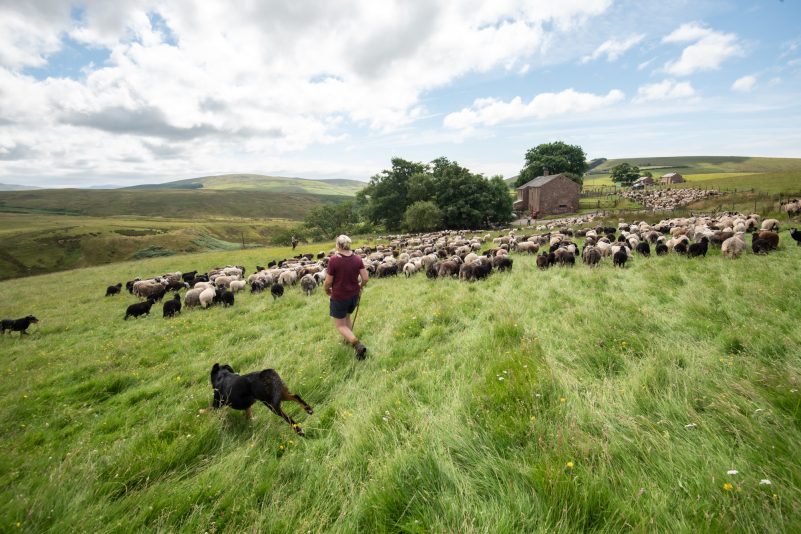From Big Ambitions to Small Print: Can the UK Make Conservation Finance Work?

Billions in public funding, a growing investor appetite, and landowners ready to engage, yet progress remains slow. Is our policy design holding nature restoration back?
If you were designing a system to reward landowners for protecting nature, how would you do it? You’d probably want something simple, fair, and transparent. A farmer plants a new hedgerow, restores a wetland, or lets species-rich grassland recover, and gets paid for it. Straightforward. But this is the UK, where environmental land management is increasingly starting to resemble a tax return. There are now multiple schemes, multiple payment pathways, and no shortage of acronyms: ELMs, BNG, LNRS, NFM, NCP… throw in carbon markets and biodiversity credits, and the landscape looks more like a regulatory spaghetti junction than a functioning finance ecosystem. The ambition is absolutely right. But is the architecture keeping up?
From Pillars to Puzzles: Life After CAP
Since leaving the European Union (EU), the UK has had the freedom to rethink how it funds land management. The Environmental Land Management schemes (ELMs) were meant to be the flagship. Out with the old Common Agricultural Policy (CAP), in with a bold ‘public money for public goods’ approach. But the rollout of ELMs, which include the Sustainable Farming Incentive (SFI), Countryside Stewardship (CS), and Landscape Recovery (LR), has been slow, piecemeal, and at times baffling. Farmers frequently say they don’t know which schemes apply to them. Advisors complain about unclear guidance. Many landowners simply opt out altogether. It’s not that the goals are wrong. Far from it. But the current patchwork of schemes often places the burden of coordination on the very people being asked to deliver outcomes. It’s like giving someone a toolkit with half the instructions missing and hoping for a well-built barn.
A Cautionary Tale from Nutrient Neutrality
Take nutrient neutrality, a policy aimed at preventing new developments from worsening river pollution in ecologically sensitive catchments. In theory, it’s a great opportunity for nature markets: developers can fund wetland restoration or improved land management to ‘offset’ the nutrients their projects might release. But in practice, many developers face long delays trying to secure credits. Local planning authorities struggle to identify and approve mitigation schemes. Landowners, meanwhile, find themselves navigating a bureaucratic thicket of water quality assessments, legal agreements, and verification protocols. This kind of complexity stifles innovation. And it sends the wrong signal to private investors, who increasingly want to fund nature-based solutions, but only if the pipeline is clear and credible.
Investors Want Infrastructure, Not Chaos
The UK has one of the most advanced green finance ecosystems in the world. The Green Finance Institute, British Standards Institution, and multiple banks are actively developing tools to support nature restoration. The Woodland Carbon Code and Peatland Code are internationally respected. There’s a thriving voluntary market. But markets need certainty. And right now, many nature-based projects still face three core problems:
1. Regulatory Overlap: A single project might have to navigate planning rules, environmental impact assessments, Biodiversity Net Gain (BNG) requirements, and nutrient neutrality conditions, all with different definitions, metrics and timelines.
2. Measurement Chaos: Investors want robust data. But biodiversity uplift, carbon sequestration, and water improvements are often measured using incompatible tools.
3. Limited Aggregation: Many of the most promising projects are small-scale and locally led, but current schemes don’t make it easy to bundle these into investable portfolios.
In other words, we’re trying to build a nature market on a wobbly policy foundation.
There Are Green Shoots
That said, it’s not all bad news. The Landscape Recovery pilot, which supports large-scale, long-term environmental projects, has shown what’s possible when government backs ambition with flexibility. Projects like Knepp Estate or the Upper Thames Tributaries Scheme are exploring how to combine multiple revenue streams (ELMs, carbon, private finance) into viable funding models. And local nature partnerships are starting to align with the emerging Local Nature Recovery Strategies (LNRS), which could eventually provide a clearer investment roadmap. But to make this work at scale, we need to rethink how these schemes are structured.
Five Things the UK Could Do Differently
1. Simplify Access: Create a single-entry portal for landowners, integrating information on all public and private schemes. If we can do it for tax returns, we can do it for tree planting.
2. Streamline Regulation: Introduce a ‘nature-positive fast track’ for planning and permitting, with clearer guidance and shorter approval times.
3. Standardise Metrics: Align biodiversity, carbon, water and soil outcome measurement tools so investors can compare like-for-like across projects.
4. Aggregate Projects: Support intermediaries to bundle small projects into larger investment vehicles, making them more attractive to pension funds and banks.
5. Build Investor Confidence: Expand government co-investment, guarantees, or insurance to de-risk early-stage nature projects and crowd in private capital.
The Bottom Line
The UK is in a strong position to lead the global shift toward conservation finance. It has the science, the financial infrastructure, and a growing base of landowners ready to engage. But without clearer, simpler and more strategic policymaking, we risk squandering that momentum. Because incentives only work if people can use them. And right now, for too many landowners, the offer feels like a maze, not a map.
Dr Lisa Sheenan,
University College Dublin

Professor Ania Zalewska
Green Finance
Subscribe to our Newsletter
A quarterly update of all LUNZ Hub activities, events and news stories.
